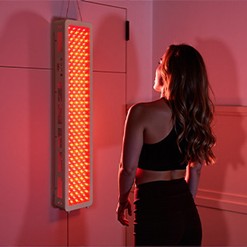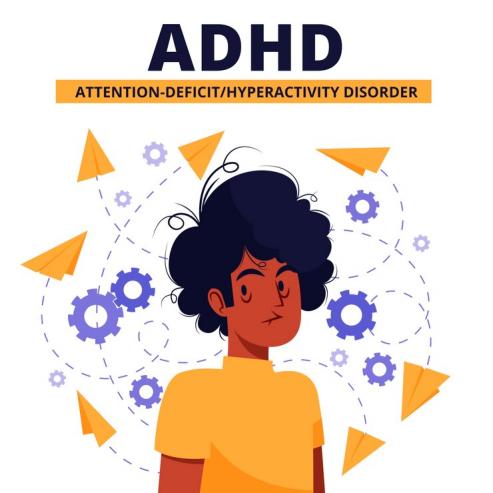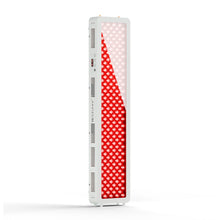Red light therapy uses special light waves that pass through your skin into your body's cells. These light waves activate the mitochondria—tiny structures inside cells that make energy. When the light reaches these cellular "power plants," they produce more ATP, the energy molecule that powers all cell activities and healing. This natural energy boost helps reduce inflammation, improve blood flow, and speed up tissue repair without medications or invasive procedures. Scientists have found that this therapy can even help control blood sugar levels by making cells work more efficiently.

How Does Red Light Actually Work Inside Your Body?
Your body is made up of trillions of cells, and each one needs energy to function properly. Inside each cell are small structures called mitochondria, which are responsible for producing energy. These mitochondria are essential because they create the energy needed for everything your body does - from moving your muscles to healing wounds.
When red light therapy is used, the light waves pass through your skin and reach your cells. Research shows that these light waves interact directly with the mitochondria, leading to increased energy production. This happens because the light stimulates a specific part of the mitochondria called cytochrome c oxidase, which helps create more ATP (the energy molecule your cells use).
The increased energy production has wide-reaching effects throughout your body. When your cells have more energy, they can perform their jobs better. This means faster healing, improved muscle recovery, and better overall function. Scientists have found that this boost in cellular energy helps reduce inflammation and supports various healing processes in the body.
What makes red light therapy particularly effective is that it works with your body's natural processes. It doesn't force any artificial changes but instead supports what your cells already do naturally. Research has shown that regular sessions can lead to improved cellular health and better body function overall.
The Science Behind Red Light Therapy: Wavelengths and Cellular Interaction
Understanding how your body's cells work helps explain how red light therapy affects them. The light waves interact with cells in specific ways that science has only recently started to understand.
How Light Waves Pass Through Skin to Reach Cells
Red light therapy uses red light waves (600-700 nm) that can travel through skin about 1 mm deep, while near-infrared light (780-980 nm) reaches about 2 mm deep into tissues. Longer light waves generally go deeper into body tissues. This ability to reach below the skin surface lets the light affect cells in muscles, nerves, and connective tissues, making it useful for many health issues. Different body tissues respond best to specific light waves, with 810 nm often working best for many treatments because it penetrates well and cells respond strongly to it.
Cell Energy Boost: How Light Powers Your Cells
Photobiomodulation is when light energy turns into cell energy inside the mitochondria (cell power centers). When red and near-infrared light reaches key parts in the mitochondria, especially a component called cytochrome c oxidase, it starts a chain of reactions that help cells make more ATP—the energy molecules cells need to work. Unlike powerful lasers, this light doesn't harm tissues; instead, it gently encourages natural cell processes, improving metabolism, blood flow, and healing. Different light waves affect cells in different ways—blue light (405-470 nm) often kills bacteria, while red and near-infrared light mainly boost cell energy production and function.

How Red Light Fuels Your Body's Energy Factories
Now that we know how light waves can reach deep into tissues, let's look at their main target: mitochondria. These tiny structures in your cells respond to red light, boosting their natural job as energy makers.
Mitochondria: Your Cell's Power Plants
Mitochondria are small structures found in most cells that transform food into energy through cellular respiration. These "power centers" transform nutrients from food into ATP, the energy molecule that powers everything from muscle contraction to brain activity. Mitochondria have specialized structures that can absorb red and near-infrared light that, in turn, activate enzymes that help generate ATP. When red light therapy is used, it optimizes this natural energy-generating system so that cells can do their job better without needing to eat more.
Better Energy Means Better Cell Function
Having enough ATP is essential to keeping all the body tissues and organs healthy. When cells are adequately supplied with energy, they can do their job better—whether that's contracting muscles, conducting nerve impulses, or fixing damage. Low cellular energy is linked with delayed healing, worse physical function, and a variety of health conditions, including aging and chronic disease. By maximizing the operation of mitochondria and allowing them to generate more ATP, red light therapy enables cells to sustain the power required to stay healthy and recover well from stress or trauma.
Red Light Reduces Cell Damage
Besides generating energy, mitochondria also generate waste products known as reactive oxygen species (ROS), which are cell toxins when they are generated in excess. Red light therapy has been found to reduce such toxic byproducts and still sustain or even boost energy production. Reducing oxidative stress shields important cell structures like DNA, proteins, and cell walls from damage that will lead to premature aging and disease. By creating a higher balance between energy generation and oxidative stress, red light therapy helps cells remain healthier for longer periods throughout the body.
How Red Light Interacts with Cellular Energy Production
Building on what we learned about mitochondria as energy factories, let's explore how red light is actually captured by cells. The way red light helps mitochondria make more energy involves specific light-catching molecules that start a chain of helpful reactions in your cells.
How Cells Absorb Light
Red and near-infrared light is taken up by specific molecules in cells called chromophores, and one of the main targets is cytochrome c oxidase in the mitochondria. The enzyme is a key player in the process of generating ATP energy. Red light changes the shape of cytochrome c oxidase upon hitting it, which boosts energy production in the mitochondria. Water molecules attached to mitochondria can help take up and transfer light energy in cells. This light absorption is best for light wavelengths in the range of 600-900 nanometers, which can penetrate the skin and reach deep body tissues.
How Red Light Boosts Natural Energy and Recovery
When the cells absorb the light, the activated cytochrome c oxidase enhances energy production in the mitochondria, which directly increases ATP levels. This extracellular energy enables cells to work more effectively and recover more quickly from injury or stress. Research shows that brain cells that receive red light generate more energy, which is especially useful for brain health and recovery. The increased ATP from red light therapy gives your body a natural energy boost that is side effect-free, which helps your body's natural healing ability. This extracellular energy is the reason why red light therapy allows you to recover faster after exercise, injury, or illness.
What Makes Red Light Therapy Work Beyond Energy Production?
While red light therapy boosts ATP production through mitochondrial activation, its benefits extend far beyond just energy creation. The cellular changes triggered by red light exposure set off a cascade of beneficial effects throughout the body's tissues, affecting everything from stress management to skin health.
Reducing Harmful Stress in Cells
When cells are stressed by toxic molecules (free radicals), it can kill off their healthy functionality. Red light therapy avoids causing harm by getting rid of the toxic molecules and enhancing the natural defense systems of the body. Avoiding the damage is critical because cell stress contributes to diseases and aging. Regular red light therapy helps achieve healthier cells throughout the body.
Assisting Cell Repair and Cell Communication
Red light therapy increases both energy production and essential cellular processes. When cells receive red light, they release specific compounds that reduce inflammation and support tissue repair. Research shows that cells exposed to red light therapy demonstrate increased proliferation. These improvements in cellular function explain why red light therapy can benefit multiple body systems simultaneously.
Supporting Skin Health
Red light therapy directly advantages the skin by stimulating the specialized cells known as fibroblasts. Fibroblasts produce collagen, a structural protein that keeps the skin firm and elastic. Regular treatment increases collagen production, thus reducing wrinkles and fine lines. The therapy also causes faster renewal of skin cells, resulting in improved texture and look of the skin. Recurrent red light treatments are able to enhance skin as a whole with less downtime compared to other procedures.
Get the Best Results from Red Light Therapy
Getting the best results requires good timing, consistency, and combining it with healthy habits.
When and How Long Should You Use Red Light Therapy?
Treatment duration and frequency differ based on your health goal and the product you own. Begin with 10-15 minute short sessions and gradually increase up to 15-30 minutes as your body gets adjusted to the therapy. For general well-being, utilizing red light 3-5 times a week is normally sufficient, though some medical issues require once-daily usage. Be consistent—ongoing treatments provide an opportunity for your cells to heal and respond appropriately.
Most people notice improvements after 1-3 months of daily use, though some effects, like pain relief, can be sooner. Don't overdo it—your cells need some time to rest between sessions so that they can properly use the energy boost provided by the red light.
What Makes Red Light Therapy More Effective?
Red light therapy will treat you well if you treat it in conjunction with other healthy practices. Drinking plenty of water makes it easier for the light to travel through your tissues and helps to keep your cells in good working order during and after treatment. Consuming antioxidant-rich foods (like brightly colored fruits and vegetables) makes red light more effective at minimizing cell damage and helping to repair it. Regular exercise improves circulation, which helps to get nutrients to cells and remove waste products more effectively, thus making your red light treatments more effective. Getting enough sleep is also valuable because much of the repair of your cells happens while you sleep, and that doubles the healing effect of red light therapy. If you combine red light treatments with those healthy practices, you're setting up an optimum condition for your cells to function at their best, and that can mean quicker, more efficient results.
Start Red Light Therapy Now for Healthier Cells and Better Wellness
Red light therapy offers us an uncomplicated but effective way to stimulate our own body's natural healing abilities at the cellular level. By maintaining a consistent regimen—starting with short treatments and gradually increasing as your body becomes accustomed—and combining therapies with good habits like adequate hydration, healthy eating, regular exercise, and quality sleep, you can derive the maximum benefits for your skin, muscles, and overall well-being. The key is patience and persistence; most people see notable improvements within 1-3 months of regular use. If you need to reduce pain, improve skin texture, or recover faster after exercise, red light therapy can be a valuable addition to your routine.















 Small
Small

 Moderate
Moderate

 Moderate
Moderate

 Moderate
Moderate

 Full
Full



